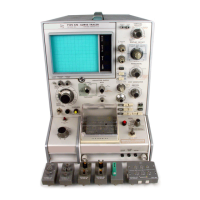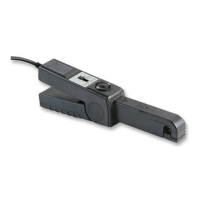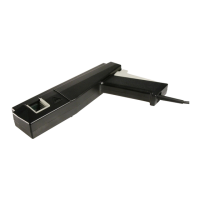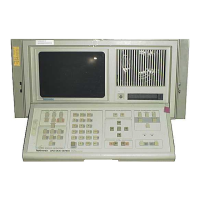Step 2: Voltage calibration
1. Connect the Model 2410 to the digital multimeter (see Figure 2-1), and select the
multimeter DC volts function.
2. Send the commands summarized in Table 2-8
in the order listed to initialize voltage
calibration. (When the :CAL:PROT:CODE command is sent, the instrument will
assume the operating states listed in Table 2-2.)
3. Perform the range calibration steps listed in Table 2-9 for each range. For each range:
• Send the :SOUR:VOLT:RANG command to select the source and sense range being
calibrated.. For example, for the 2V range, send the following command:
:SOUR:VOLT:RANG 2
• Program the source to output the negative full-range value using the :SOUR:VOLT
command. For example:
:SOUR:VOLT -2
NOTE Se
t the source to -975 for the 1000V range.
• Note
and record the multimeter reading.
• Use the multimeter reading as the parameter for the :CAL:PROT:SOUR and
:CAL:PROT:SENS commands. For example, a typical value for the 2V range
would be:
:CAL:PROT:SOUR -1.998
:CAL:PROT:SENS -1.998
• Program the voltage source for 0V output using the :SOUR:VOLT 0.0 command.
• Note the multimeter reading.
• Send the source and sense calibration commands using the multimeter reading for the
p
arame
ter. For example:
:CAL:PROT:SOUR 1E-3
:CAL:PROT:SENS 1E-3
• Set the source to the positive full-range value using the :SOUR:VOLT command. For
exam
ple:
:SOUR:VOLT 2
NOTE Set t
he source to 975 for the 1000V range.
• Note an
d record the multimeter reading.
• Send the source and sense commands using the multimeter reading as the parameter.
For example:
:CAL:PROT:SOUR 1.997
:CAL:PROT:SENS 1.997
• Send the SOUR:VOLT 0.0 command to set the source voltage to 0V.
• Note and record the multimeter reading.
• Send the :CAL:PROT:SOUR command using the multimeter reading as the
command parameter. For example:
:CAL:PROT:SOUR -1.02E-3
Calibration 2-19
2410-902-01.book Page 19 Monday, November 7, 2005 2:49 PM

